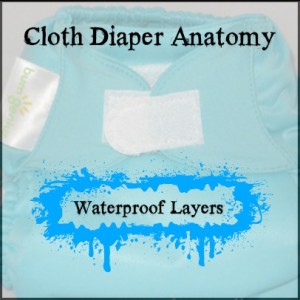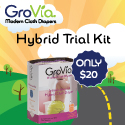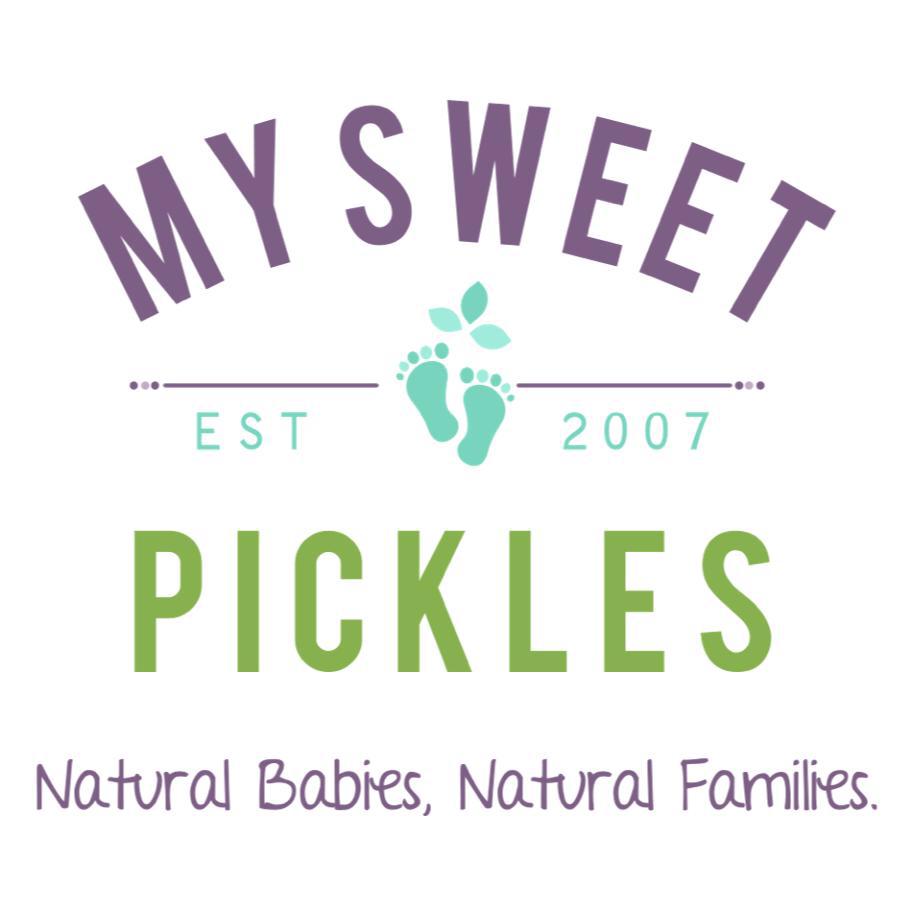This post was originally published on the Kelly Wels blog. Post may contain affiliate links meaning if you click and buy I receive a small commission. Thank you. We talked about absorbent materials used in cloth diapers, and we talked about different materials that line diapers. Without something on the outside to keep moisture in, you might have a mess on your hands! So, what are the options? You can still buy “plastic pants,” but today’s diapers are way better!
Waterproof/resistant layers can be built into the diaper (like in an all-in-one, all-in-two, pocket diaper etc.)
Diapers can also contain no waterproof layer (fitteds, prefolds, flats) and you’ll need to use a cover over them. You can also use these diapers without a cover to let your baby’s skin breathe (great for rashes), but you’ll need to be vigilant about changing diapers, so you don’t end up with soggy carpets. 🙂
PUL or polyurethane laminate is polyester fabric laminated to polyurethane film. PUL is used in pocket diapers, all-in-twos, all-in-ones and covers in a huge variety of solid colors and prints. It is sometimes used as a hidden layer, sandwiched between an inner layer and knit or woven outer fabric.
TPU or theroplastic polyurethane is similar to PUL in that it is polyester fabric laminated to a water resistant film. TPU is used in diapers such as Rumparooz. The TPU Rumparooz uses is heat bonded, solvent free, and biodegradable.
Minky is a fuzzy polyester, water resistant fabric, also used in baby blankets. You may also see minky that has been laminated with PUL.
Fleece is sometimes used as a water resistant layer in hybrid fitteds, not making them completely waterproof, but keeping moisture in longer, allowing the diapers to be used without a cover. Heavy duty Windpro fleece is often used in fleece pocket diapers, making a highly water resistant, but also breathable diaper. You can also find fleece soakers and fleece longies, and polyester fleece pajama pants are great to use over cloth.
Wool is a pricier material for cloth diaper covers, but it is breathable, durable, soft, and wonderful to use over night time fitteds. Eco Bubs makes a washable wool pocket diaper however, the wool is more for looks since it has a layer of PUL, and doesn’t function like the wool in a cover. You will see wool covers as knit or interlock, longies, shorties, soakers or wrap style covers. To care for your wool, you’ll need wool wash and lanolin, but wool is much easier to use and care for than you’d expect. You can typically gets several weeks of use between washes, airing covers out between uses.
You can also find nylon covers, which are typically the least expensive & no-frills covers.
What is your favorite waterproof cover/outer layer?
If you’re new to cloth diapers, check out my Cloth Diapers 101 article.










 Maria wants to live in a world where cloth diapers are the norm and moms can make parenting choices without judgement. When she’s not chasing her 18, 14 and 11-year old kids around, you might find her checking out the latest gadgets, organizing something (again) or exercising in the fresh air.
Maria wants to live in a world where cloth diapers are the norm and moms can make parenting choices without judgement. When she’s not chasing her 18, 14 and 11-year old kids around, you might find her checking out the latest gadgets, organizing something (again) or exercising in the fresh air. 







[…] more about absorbent materials used in cloth diapers, cloth diaper inners and waterproof layers in cloth diapers in my posts on cloth diaper […]
[…] links meaning if you click and buy I receive a small commission. Thank you. So your diaper has a water resistant outer, an inner, an absorbent material and elastic. How do you close […]